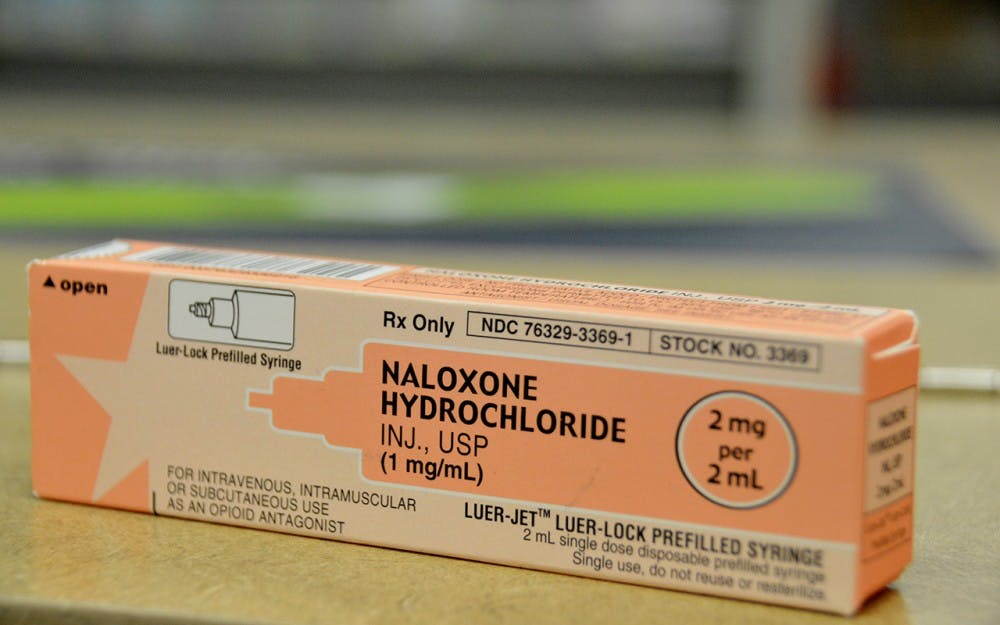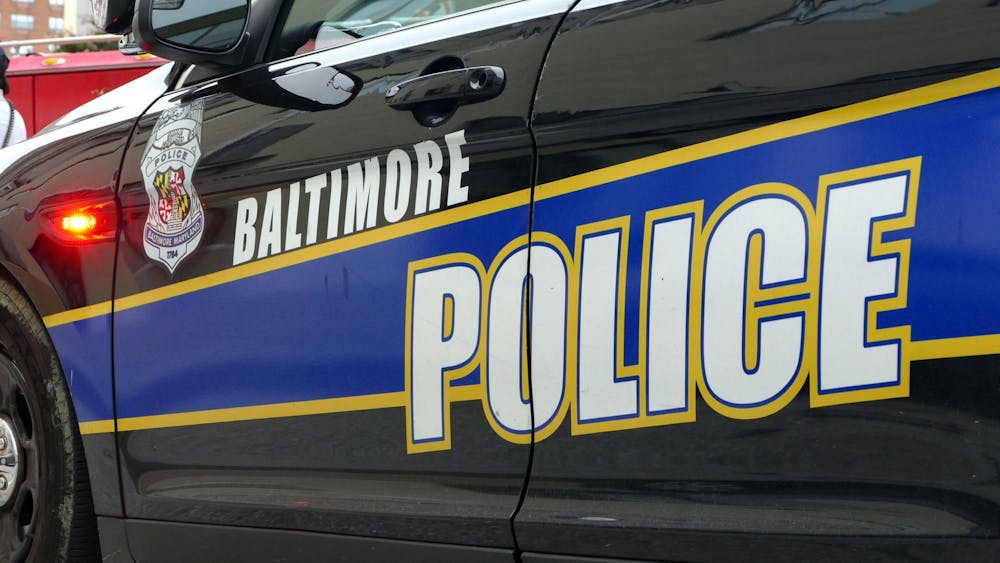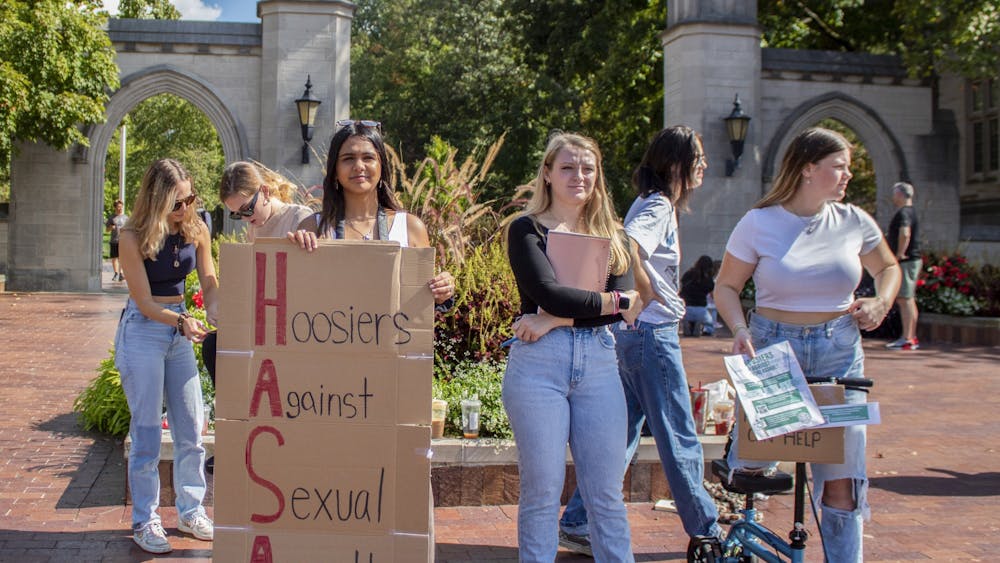The pilot stock of 20 free kits, which would ordinarily cost about $100 each, is part of OASIS’s newest program, Drug Overdose Prevention Education. It began as the result of years of research and planning spearheaded by OASIS Director Jackie Daniels.
DOPE also includes workshops, which the office is piloting with social work classes.
OASIS is a department of the IU Health Center that provides drug and alcohol harm reduction, intervention and recovery support.
Planning for the program began a couple of years ago, when Daniels and others on campus began losing friends to the nationwide opioid epidemic, Daniels said.
“It just became very personal for myself and my staff and students that I was having conversations with,” she said. “It was like people were just dying, and there was no opportunity for prevention or even intervention to get people help.”
By examining data and speaking with staff and students, Daniels discovered students were not using heroin, but were experimenting with opioids in the form of prescription drugs.
“If they’re using this lethal combination of alcohol, Xanax, stimulants and opioids all at the same time, it’s the perfect storm for a fatal overdose,” she said.
Around that time, Daniels noticed the media talking about naloxone, saw it pop up on her Facebook feed and fielded questions from students doing projects on harm reduction.
So she began attending trainings held by the then-new Indiana Recovery Alliance.
That was when Daniels first approached IUPD about obtaining naloxone, which the department would go on to distribute in April with the help of a grant.
“This is magic,” she thought. “Why don’t we have this in the hands of more people in our community?”
To answer to her own question, she reached out in July to Overdose Lifeline Inc., an Indiana nonprofit addressing the opioid epidemic through education, harm reduction, resources and support.
OASIS secured from them a grant for the 20 naloxone kits, which Mike Mitchell of the Health Center said should be available within the next couple of weeks.
The medication is available over the counter, Daniels said, with credit to legislation passed earlier this year.
Also in July, IUPD responded to the first call that warranted use of its naloxone kits.
Minutes past midnight July 6, officers Jeremy Haluda and Nick Lewis peered into an apparently crashed car containing drug paraphernalia and a man approaching death.
The car was motionless in the southbound lane of Woodlawn Avenue. The man inside sweated profusely and was slumped over the steering wheel.
Haluda and Lewis recognized the symptoms of opioid overdose and slid together the pieces of a naloxone kit.
The soft white tip of the syringe plunged into one nostril and then the other.
No response.
The officers administered a second dose, and the man regained consciousness within seconds. They had bought him enough time for an ambulance to arrive and for emergency medical technicians to take over.
This was the first and only life saved to date by IUPD-Bloomington’s naloxone kits. It came about a month after IUPD-Northwest administered the opioid-countering drug to a woman off campus.
The incident came about three months after IUPD first distributed naloxone kits to several campuses and six months after the Bloomington branch had a training session where officials from several agencies learned about naloxone and opioid overdose.
Before the program started, IUPD-Bloomington Chief Laury Flint said she was apprehensive about officers administering naloxone.
“Not being an EMT, I was a little concerned about the process,” she said. “But it’s really very simple.”
Now, months after putting kits in every squad car, Flint’s worries have given way to confidence.
“Having a save or a couple in the system definitely is encouraging,” Flint said. “We’re making a difference.”
The department is making a difference in what the American Society of Addiction Medicine found to be the leading cause of accidental death: drug overdose. In 2014 alone, opioids caused more than 25,000 deaths, including 10,574 related to heroin and 18,893 related to prescription pain relievers.
According to David Rhodes, IU training lieutenant for public safety education, those who are represented by those statistics often do not fit the stereotype of drug abuser.
“You want to make sure that you’re not thinking druggies,” Rhodes said. “It’s just people that have unfortunately fallen into this particular predicament through no fault of their own.”
Those who develop a substance abuse disorder just happen to have body makeups susceptible to addiction, he said.
“We definitely want students to know it is possible to come to IU and be a responsible, moderate user of alcohol or other substances,” Daniels said. “At the same time, they’re just not immune, and if it should happen, we want them to know where to get help and how to prevent overdose.”
Daniels said she doesn’t believe the police or OASIS want to punish students for overdosing, but she realizes and accepts that as the common perception.
“If people know IUPD has it, and they don’t have a supply, they can at least call 911 and get some help,” Daniels said. “But then also to create a lower-barrier way of using naloxone, we wanted to provide it to students at the Health Center kind of without the fear of judgment or consequence.”
Another common misperception is providing naloxone will embolden people to continue using drugs, Daniels said.
“What we actually know is it’s a chance to get help more so than it is encouragement to continue using drugs,” she said. “There’s not a second chance for that person that ends up dying, so this is a way to save their lives, but also let them know that there’s hope for recovery.”






